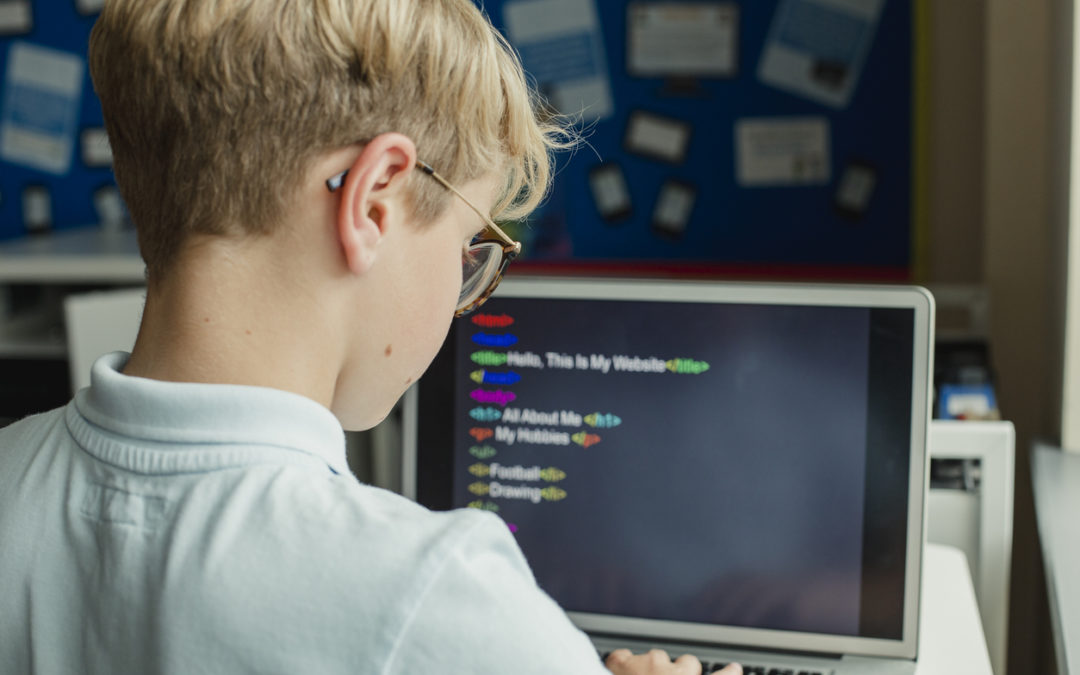Besides creating a knowledge base for future learning, coding skills in students help to develop important problem-solving skills and mindsets that set students up for success.
How to Teach Students to Code
There are several approaches to teaching students to code. These include using a comprehensive coding program that teaches age-appropriate coding skills to K-12 students. These comprehensive programs offer coding lessons as well as a practice environment, application projects, quizzes and reporting.
Some parents or teachers may develop their own curriculum by combining coding lessons with relevant hands-on practice and applications. These may be a piecemeal created by proprietary lessons and supported by free online coding resources.
Usually, parents and teachers will choose a comprehensive computer coding curriculum program to teach students to code. This is because these programs typically provide a successful, high-quality lesson progression that can be adapted to the instructor’s goals while minimizing planning, setup, and development time.
Can I Teach Students to Code Without Purchasing a Curriculum Program?
You can certainly teach students to code without purchasing curriculum or a comprehensive program. However, it will take significant planning and preparation. If you choose to develop coding curriculum for students yourself, your goal should be to introduce coding in a concise and understandable way, engage the interest of the students you’re teaching, and express practical types of applications.
Teaching students to code without using a pre-developed program or curriculum runs the risk of over-complicating coding basics and causing the students to “give up” before they are able to begin. Additionally, without a well-planned program or curriculum, students may find they cannot practice interesting and relevant real-life coding skills from the start, which can diminish the learning experience for students.
However, with the right preparation and planning, teaching students to code can be a successful and enjoyable experience!
5 Tips for Teaching Students to Code
Learning.com offers computer coding curriculum through our EasyCode program. Here are some tips that have helped to make this program successful in teaching students to code:
1. Provide Hands-On Practice Exercises
While some learners, especially adults, can pick up some coding skills through reading and lectures, most students will be much more successful if they’re able to practice skills in a hands-on environment.
2. Engage Students in Real-World Application Projects
Teachers and parents are quite familiar with students lamenting about how they’re “never going to use X in real life.” For students with no previous exposure to coding, it can seem like a foreign and irrelevant concept. Take time to explain the applications for coding that students may enjoy in the present and future, then provide real-world application projects that allow them to apply what they are learning in something that has real results that they can enjoy.
3. Ensure Curriculum is Relevant to Future Opportunities
Before creating your own computer coding curriculum for students, ensure the skills you have now are relevant to future opportunities the students may face. The world of coding is ever progressing, with some concepts and languages becoming quickly outdated. Make sure you balance the basic pillars of coding with up-to-date, relevant language and applications.
4. Create Age-Appropriate Lessons
As with any curriculum, it is important the curriculum you use to teach students to code is appropriate for their age and previous skills. Keeping the curriculum in line with the student’s abilities ensures your students will learn as much as possible without becoming overwhelmed by information.
5. Adapt Delivery to Your Classroom Resources
Each classroom has different technological capabilities. When you’re creating your coding curriculum, make sure you are designing it to be compatible with the resources you have available. If your students engage in virtual distance learning, this means having programs available from home laptops or tablets, if needed.
Learn More
Are you interested in learning more about Learning.com’s coding curriculum for K-12 students? Learn more by clicking the button below.

Learning.com Team
Staff Writers
Founded in 1999, Learning.com provides educators with solutions to prepare their students with critical digital skills. Our web-based curriculum for grades K-12 engages students as they learn keyboarding, online safety, applied productivity tools, computational thinking, coding and more.
Further Reading
Improve Student Performance on Online Assessments with Digital Literacy
Online assessments have become increasingly prevalent in education, especially with the rise of digital learning environments and the need for...
Overlooked Digital Skills Students Need to Thrive in a Digital World
As the digital landscape continues to evolve at a rapid pace, educators, parents and policymakers are increasingly focused on preparing students for...
Creating a Classroom Guide to “Netiquette”: Promoting Respectful Online Behavior
In today’s digitally connected world, the importance of teaching students how to conduct themselves online has never been greater. The term...




